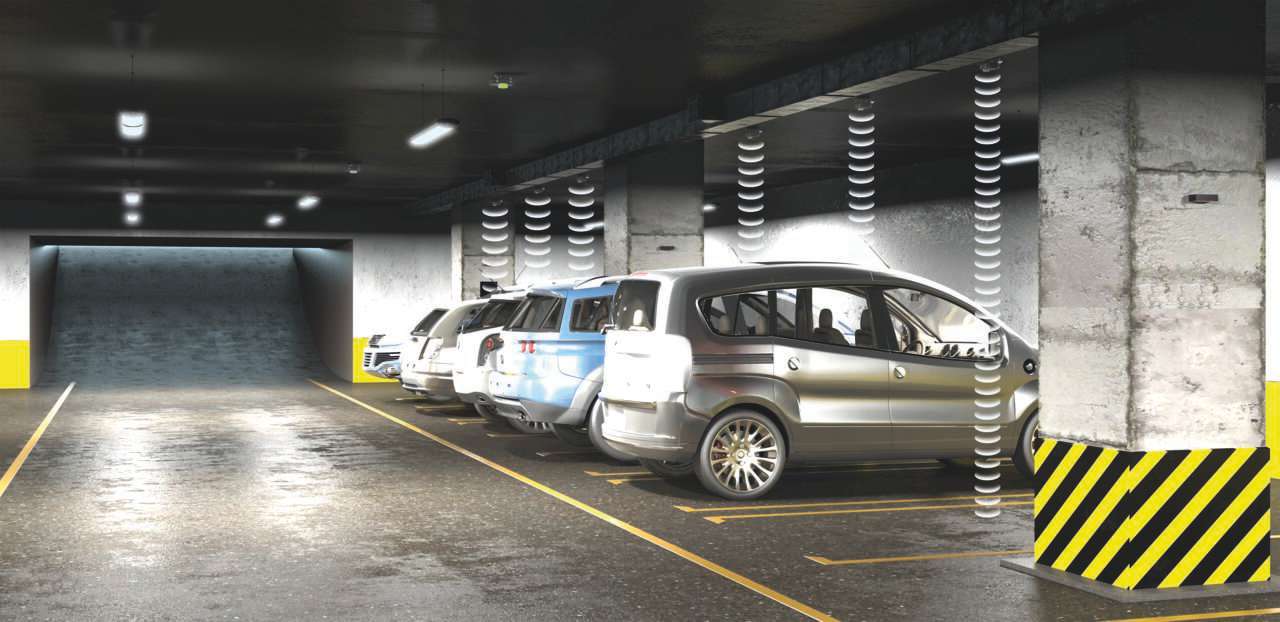Vehicle Detection for Traffic and Parking
Enhance Mobility and Alleviate Parking Concerns
Vehicle detection solutions for traffic control and parking help communities and businesses implement parking guidance tools, ride sharing programs, and intelligent transportation systems (ITS) that help enhance mobility and alleviate parking concerns.
Keep reading to learn how vehicle detection solutions can benefit your parking facility.
Each parking application is unique, from off-street parking to underground parking to complex facilities with a combination of parking lots, ramps, or underground garages.
Many parking applications depend on accurate vehicle counting to reliably verify when a garage is full, many require reliable sensing in order to activate a pay station, and many can benefit from systems that direct drivers to available parking spots.
It is therefore important to match the right technology to meet the demands of the application. Some technologies, like ultrasonic sensors, are best suited for covered parking applications where they are sheltered from the elements that can negatively impract sensing function.
Other technologies, like wireless magnetometers, excel in harsh outdoor conditions. In some cases, an application could benefit from multiple redundant technologies to achieve the desired level of precise detection.
Contact an engineer to disucss your specific applicaiton with an expert.
Vehicle Detection at a Shopping Center
Application: Reduce vehicle congenstion and encourage customers to stay by making it easy to find available parking spaces.
Challenges: Prolonged searches and long waits for parking spaces has a negative correlation with time and money spent at the center, as well as on overall customer experience and the frequency or likelihood of return visits.
Solution: Working with a local integrator, a dynamic parking guidance system was implemented at the center to clearly show where parking is available. The system uses a variety of Banner vehicle detection sensors deployed in a Sure Cross® wireless network.
Benefits: Implementing a parking guidance system made it easier for motorists to access the shopping center and improved their overall experience. Less time spent looking for available parking translates into visitors spending more time and money at the center.
Vehicle Detection for Street Parking
Application: Detecting the presence of shared electric cars at a charging station is necessary to prevent non-permitted vehicles from parking at these stations.
Challenges: The outdoor environment can be challenging for many vehicle sensing technologies. Vandalism is also a risk due to the public location.
Solution: A high sensitivity radar sensor detects the presence of vehicles at a charging station. If the car is not plugged into the charging station, a signal is sent to a central location, alerting authorities to remove the vehicle if necessary.
Benefits: Radar sensors are not affected by weather conditions, ensuring reliable performance in all seasons. The sensor can be installed inside the charging station to reduce the risk of vandalism.
Vehicle Detection for Indoor Parking
Application: Helping motorists to quickly find available parking can minimize traffic congestion and vehicle emissions in confined and enclosed underground parking garages.
Challenges: The diverse configurations of underground facilities can challenge the effectiveness of many parking guidance systems. Wired systems are costly and require significant work under the concrete.
Solution: A wireless system of sensors and indicators a simple, cost-effective solution that enables motorists to quickly find available parking in underground parking facilities. Wireless ultrasonic sensors detect whether a vehicle is present in a parking spot, and wireless indicator lights visually direct drivers to available stalls.
Benefits: Ultrasonic sneosrs can be mounted directly on the ceiling of a parking garage to identify the presence of a car in the parking space below. Furthermore, a wireless solution enables rapid deployment in any parking facility with minimal downtime and no costly cable runs.
Wireless Magnetometer
The M-GAGE sensor uses passive sensing technology to detect large ferrous objects, such as motor vehicles. The M-GAGE provides an alternative replacement for inductive loop systems and needs no external control box.
- Designed to minimize the effects of temperature change and fluctuating magnetic fields
- Sensor learns ambient background and stores settings in non-volatile memory
- FlexPower technology driven by a single, primary lithium battery integrated into the housing
- Transceivers provide two-way communication between the Gateway and Node, including fully acknowledged data transmission
- Fully potted and sealed housing contains the power source, sensor, and antenna for a completely wireless solution
Wireless Ultrasonic Node
The wireless ultrasonic sensor node is ideal for indoor parking applications.
- Can be mounted directly on the ceiling of a parking garage to identify the presence of a car in the parking space below.
- Detects objects up to 4 m away
- Integrated D-cell battery reduces the cost of installation by eliminating the need to run wires and conduit.
- Designed with temperature compensation via on-board temperature measurement
- Transceivers provide two-way communication between the Gateway and Node, including fully acknowledged data transmission
- Housing contains the battery, sensor, and antenna for a complete, robust wireless solution – IP67, NEMA 6
Radar Sensor for Vehicle Detection
High sensitivity radar-based sensors ideal for collision avoidance on board mobile equipment, like reach stackers, forklifts, and mining vehicles.
- Fourth generation FMCW (true-presence) radar detects moving and stationary objects
- Higher sensitivity and longer range
- Adjustable sensing field — ignores objects beyond setpoint
- Easy setup and configuration of range, sensitivity, and output with simple DIP switches
- Sensing functions are unaffected by wind, falling rain or snow, fog, humidity, air temperatures, or light
- Sensor operates in Industrial, Scientific, and Medical (ISM) telecommunication band no special license required
- Rugged IP67 housing withstands harsh environments















